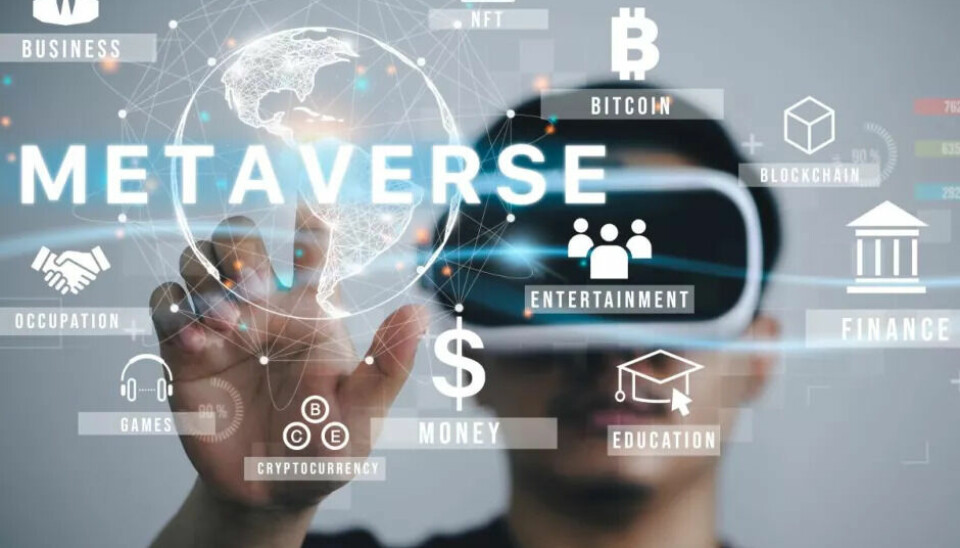Industry 4.0
The industrial metaverse as the next milestone

The digitization of the industry is in full swing. As the next milestone, the industrial metaverse has come into focus for product and production planners. It opens up entirely new potentials for the industry and companies.
Some say transformation, others speak of the fourth industrial revolution - it means the same thing: Now is the time to prepare the industry for the challenges of the future and for ever more dynamic and volatile markets. At the center is a simple,
cross-industry and cross-product entrepreneurial concept: saving through innovation. The path to this goal increasingly leads through the industrial metaverse.
The metaverse has been a hype for several years - and a promise yet to be fulfilled, into which technology companies like Apple and Google have invested billions. Facebook even optimistically changed its name to Meta Platforms Inc. in 2021. While the commercial metaverse is not really making progress and has not yet significantly reached people's everyday lives, the industrial metaverse has already gained significant momentum towards the future.
Manage data in real time
The concept builds on the Internet of Things (IoT) and Industry 4.0. It enables the integration of physical and virtual worlds in an industrial context. This creates great competitive advantages for companies. By connecting the physical and digital aspects of production and manufacturing, a transparent digital infrastructure can be built that promises more efficiency. It aims to manage, monitor, and analyze data and information about production, logistics, and the supply chain in real time.
The foundation for such deep networking and agility along the entire value chain is created by the digital thread - the digital common thread. It links relevant data and information in real-time, thus creating a continuous connection between digital twins, i.e., digital representations of products, processes, and resources.
The right technological foundation matters
These are the central points of the theory. In practice, it is important for companies to create an individual roadmap towards the industrial metaverse that emerges from implementation and to select the most suitable technological foundation. The company Edag Production Solutions and its brand Feynsinn, which focuses on digital applications based on the industrial metaverse along industrial value chains, use the industrial metaverse. For the integration of the digital thread, they bring together development results and process data from real production in different industries on an integrated platform.
Since it is hardly realistic today to standardize all systems and data formats, the trend is moving towards open platforms and open-source tools that ensure interoperability between all systems and where there is no vendor lock-in. This way, companies can flexibly access the best technologies and link each of their data sources.
Avoid reactive power through lengthy validation processes
Products and production facilities today are usually no longer created within a closed organization. Instead, numerous external competencies must be involved. The collection and integration of data is essential - and in real time. Simply pressing relevant data and information along product development into a unified data schema, as was part of many product data management and product lifecycle management strategies in the past, is no longer sufficient. It repeatedly shows that such milestone-based validation processes generate a lot of reactive power. This not only causes unnecessary costs, but also results in a lot of lost time while development continues to progress in the market. Often, the development status of a product is already outdated before it could even be validated.
In the agile approach of the industrial metaverse, data from all involved disciplines is continuously collected, consolidated, and, if necessary, converted throughout the entire product development process. Speed is key in all of this. The alternative to long waiting loops along time-consuming approval processes and to cumbersome formalities in error documentation is holistic data management. By allowing data from various sources to flow unidirectionally into the digital thread, not only is complexity reduced, but significant responsiveness is also built.
Clearing the way for interactive simulations of reality
In this scenario of the industrial metaverse, digital twins not only create a representation of a production facility and individual production steps. They also pave the way for interactive simulations. Thanks to them, highly networked processes, such as those that occur during commissioning and later assembly steps, already run in real-time on a computer before a production facility is even built. Additionally, optimizations and validations of necessary changes can be made immediately. This opens the door to an integrated world. In it, the connection of many different systems and data sources paves the way for holistic and maximally flexible production design. This allows companies to quickly respond to changing market conditions in the real world with a 'breathing' factory.
Humans play an indispensable, central role in the industrial metaverse. By comprehensively integrating customers and end customers into the virtual environment, they are given a realistic outlook on products and processes. However, the systems used must remain intuitive and user-friendly despite all the complexity. This not only facilitates technical implementation but also the transfer of knowledge with users and their acceptance of the systems.
Why the industrial metaverse is sustainable
Not least, the industrial metaverse also promotes more sustainable production. Virtual training and digital prototypes, for example, conserve resources and reduce CO₂ emissions. At the same time, the integration of predictive analytics, user feedback, and artificial intelligence allows for the optimization of maintenance and servicing of plants and machinery, which extends their lifespan and reduces operating costs.
Ready for the next level of industrial production
What does this all mean for an (interim) conclusion? The industrial metaverse is more than just another hype in the product development process and on the production level: it is a revolutionary step that takes the industry to the next level. By integrating technologies such as digital twins, cloud computing, and artificial intelligence on an internal, cross-system platform, the industrial metaverse demonstrably makes production more efficient, flexible, and sustainable. Companies that now embrace this trend secure decisive competitive advantages.